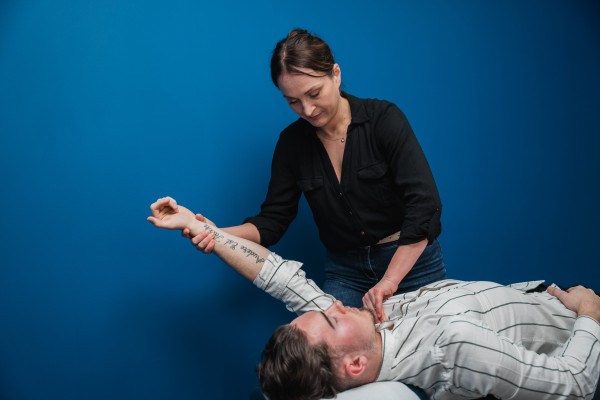Shoulder Mobility Vs Shoulder Stability- Why You Need Both!
Posted Jun 02, 2022 at 08:57
Posted Jun 02, 2022 at 08:57

Shoulder mobility vs shoulder stability. Why do you need both?
Shoulder problems are one of the common issues that people come to the clinic with. With shoulder being the most mobile joint in the body, it is no surprise that it is an area where a lot can go wrong. Another thing to notice is also that we don’t use our shoulders enough. Unless you do some sort of training and exercise, how often in everyday life do you bring your arms above your head? Perhaps not very often.
There are two important concepts to consider when we talk about shoulders: mobility and stability. We need them both for healthy shoulders.
What is shoulder mobility and why is it important?
Shoulder mobility is the ability to move your shoulder joints through their full range of motion. This includes moving your arms forward and backwards, up and down, and rotating them in and out. Keeping your shoulder mobile helps to maintain your range of motion and prevents pain and stiffness.
There are two main types of exercises that can help improve your shoulder mobility:
Both static and dynamic stretches can be beneficial for improving shoulder mobility but if you not sure which ones are the best for you, ask your therapist or refer to one of our blogs that gives you insight into prons and cons of various stretching techniques.
Shoulder stability is the ability to keep your shoulder joint in place while performing activities. Shoulder stability relays massively on tension in muscles involved in the shoulder movement. The joint itself structurally is not very stable, not as stable as hip for example. The socked in which the head of the humerus- the long bone in the arm- sits is quite shallow which allows for the great range of motion that the joint has.
Improving stability of the shoulder helps to prevent dislocation, subluxation (partial dislocation) of the shoulder joint, impingements etc. In simple terms, it makes shoulder less prone to injuries.
There are three main types of exercises that can help improve your shoulder stability:
And the best one!- Stabilizing your shoulder when you move your body around it! That one will be the easiest to explain with example.
Grab a kettlebell or something that will require you to really focus on stabilizing it above your head. You can start with inverted bottle of water rather than inverted kettlebell if you haven’t got one. Hold the object above your head and then focus on keeping the shoulder stable and moving the rest of the body around it.
That will help with building stability in the shoulder.
If you suffer with shoulder problems, or know someone who does. Why not to book in with us and get it assessed to see what is the real issue behind it.